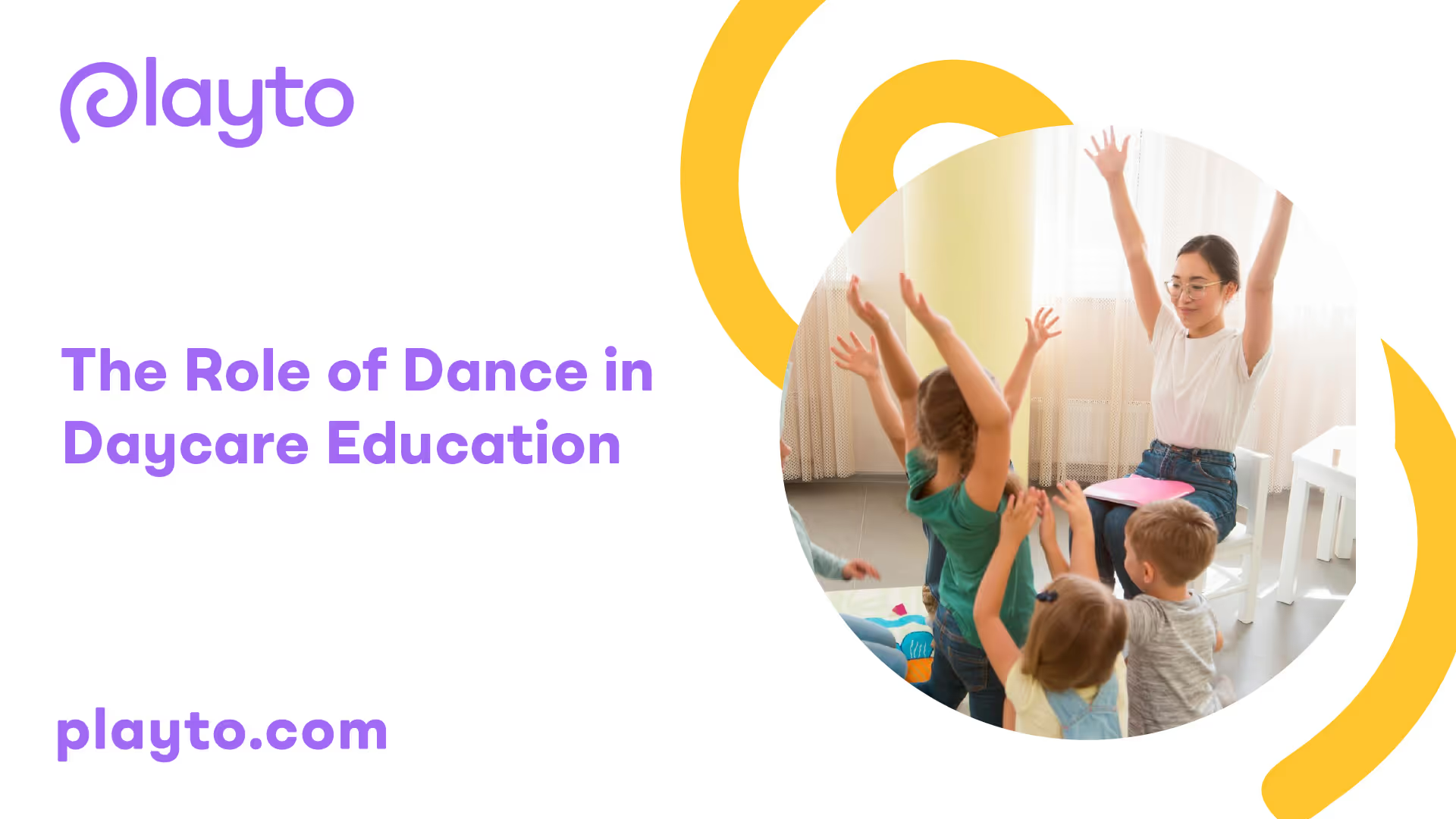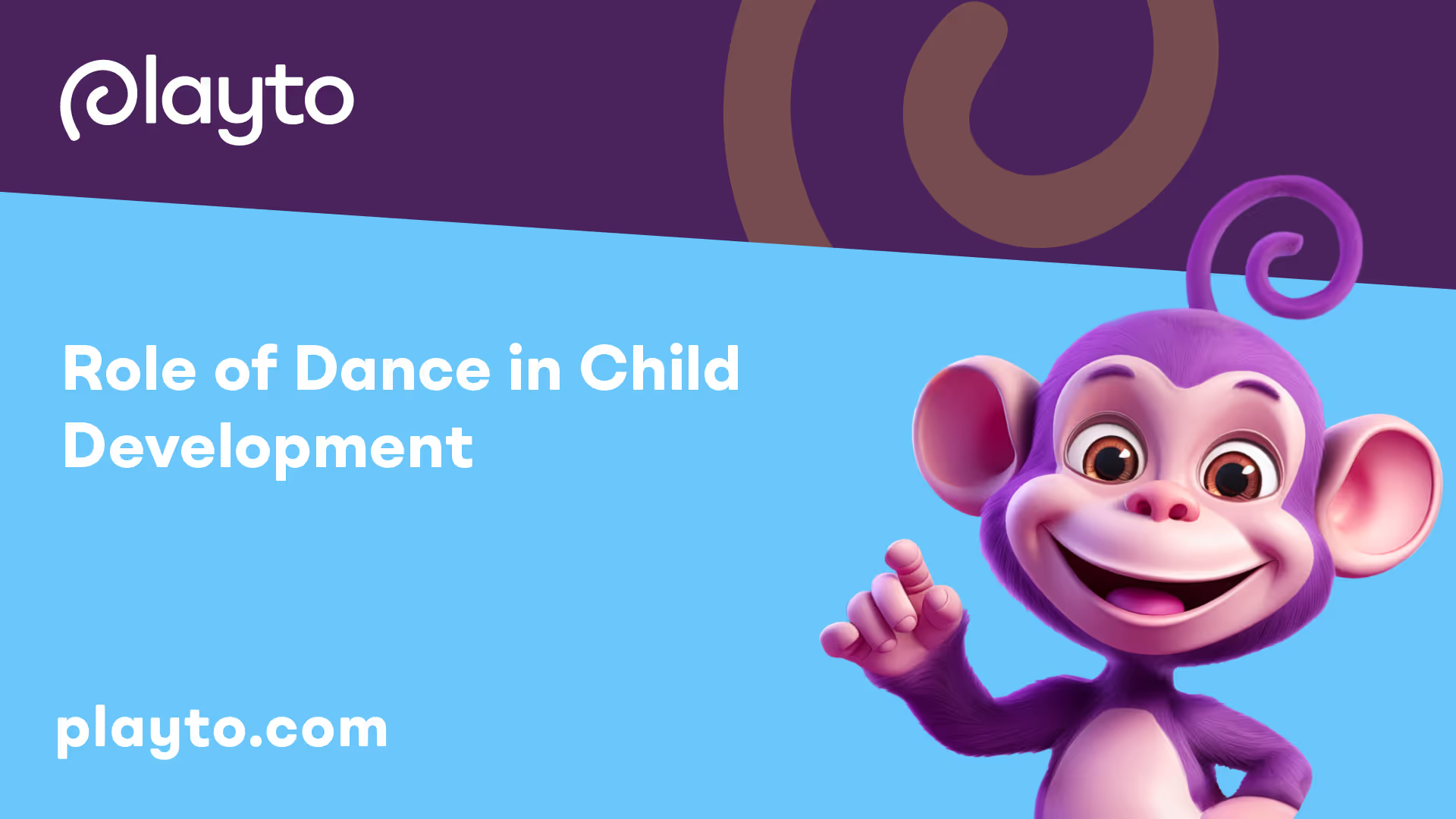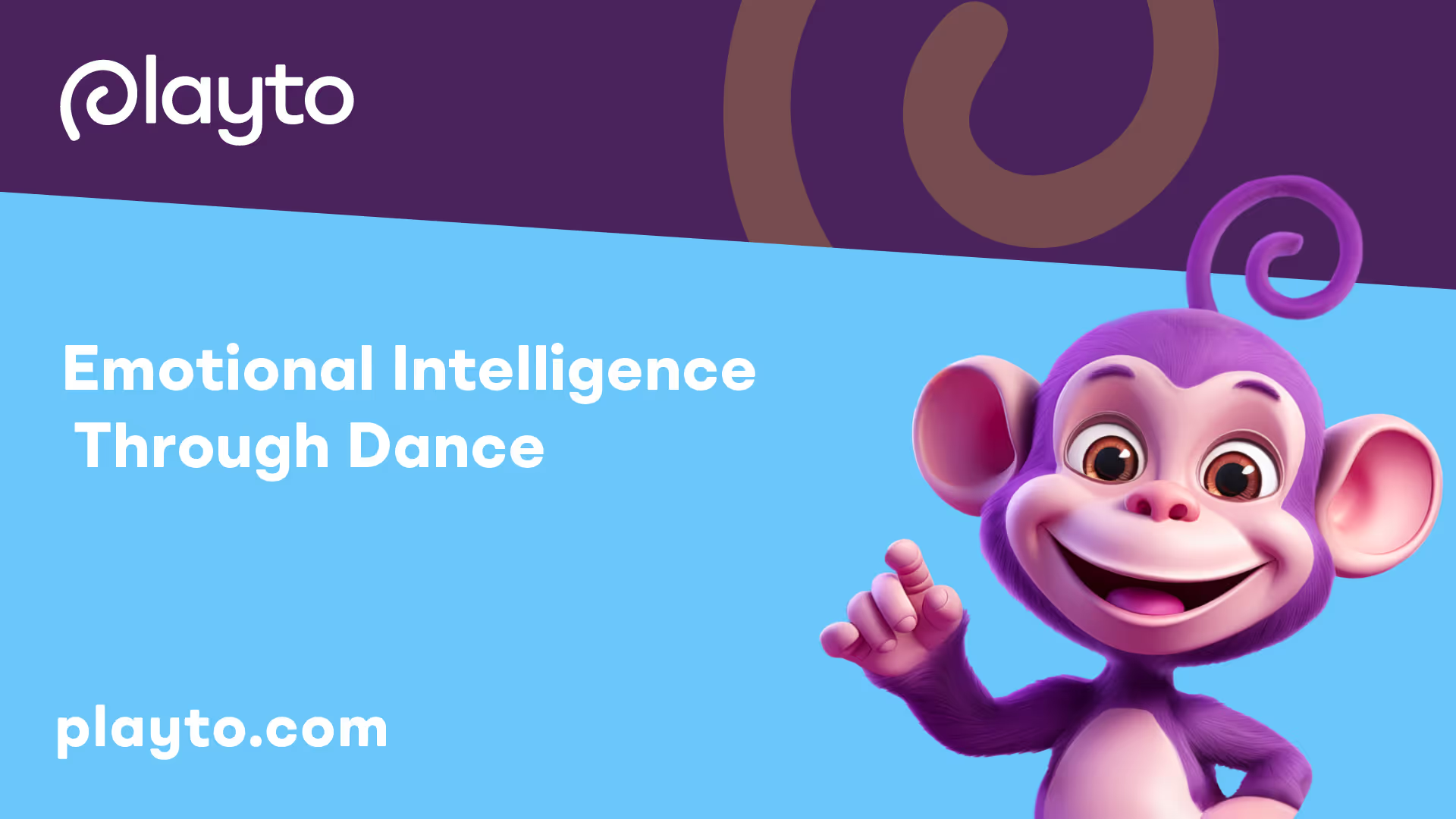
Dance in Early Childhood Education
In early childhood education, dance plays a significant role in fostering the creative development of young children. Encouraging creativity not only enhances their cognitive abilities but also promotes problem-solving skills, emotional intelligence, and self-expression, which are crucial for their overall growth and future success [1].
Importance of Creative Development
Imagination and creative development are essential components of early childhood education. They enable children to foster a range of skills and abilities, including language, literacy, physical, social, and emotional development. When children engage in imaginative and creative activities, they have the opportunity to explore, experiment, and understand the world around them [1].
Creative play, which involves unstructured and open-ended activities, allows children to freely explore their imagination, experiment with different materials, and express themselves. This type of play encourages independent thinking, problem-solving, and creativity. It provides children with the opportunity to manipulate materials, explore various scenarios, and develop essential skills such as critical thinking and self-expression [1].
By fostering creative development in young children, we make a powerful investment in their future. It enables them to develop various skills and abilities that will serve them throughout their lives. From enhancing cognitive and problem-solving skills to promoting emotional intelligence and self-expression, creative development is a gateway to exploration, experimentation, and understanding of the world around them [1].
Benefits of Imagination and Creativity
Integrating dance into early childhood education provides numerous benefits for children. It allows them to express themselves through movement, enhancing their physical, cognitive, and emotional development. Here are some key benefits of incorporating dance in the early childhood curriculum:
- Motor Skill Development: Dancing helps children develop fine and gross motor skills as they learn to control their body movements, balance, coordination, and spatial awareness. It contributes to their overall physical development and fosters a healthy and active lifestyle.
- Cognitive Growth Through Dance: Dance engages both the body and the mind, promoting cognitive growth. When children learn dance steps, patterns, and sequences, they improve their memory, concentration, and problem-solving abilities. Dancing also stimulates creativity and imagination, allowing children to think outside the box and explore new ideas.
- Expression and Emotional Regulation: Dance provides a medium for children to express their emotions and channel their energy in a positive and constructive way. It helps them develop emotional intelligence and regulation by exploring different movements and connecting with the music. Dance also promotes self-confidence and self-esteem as children gain a sense of accomplishment and pride in their abilities.
- Social Skills Development: Dancing in a group setting promotes teamwork, cooperation, and communication. Children learn to interact with their peers, follow instructions, and collaborate to create synchronized movements. These social skills are valuable for building relationships, developing empathy, and working effectively in a team.
Integrating dance into early childhood education not only enhances children's physical and cognitive abilities but also nurtures their emotional intelligence, creativity, and social skills. It creates a well-rounded learning environment that supports their overall development and sets a strong foundation for future academic and personal success.

Role of Dance in Child Development
Dance plays a vital role in the development of young children, offering a range of benefits for their physical and cognitive growth. Let's explore two key aspects of child development that are influenced by dance: motor skill development and cognitive growth.
Motor Skill Development
Dance is a powerful tool for developing and refining motor skills and coordination in young children. It provides an ideal platform for enhancing gross and fine motor skills through rhythmic movements, footwork, and body control [2]. Through dance, children improve their balance, spatial awareness, and body awareness as they learn to move their bodies in different ways.
To illustrate the impact of dance on motor skill development, consider the following benefits:
- Gross Motor Skills: Dance involves large-scale movements that help children develop strength, coordination, and balance. By practicing various dance steps and routines, children improve their ability to control their bodies and execute movements with fluidity and grace.
- Fine Motor Skills: In addition to gross motor skills, dance also encourages the development of fine motor skills. Movements such as finger movements, hand gestures, and intricate footwork require precision and control, allowing children to refine their dexterity and coordination.
To further enhance motor skill development through dance, it's important to provide children with a variety of movement experiences and opportunities to explore different dance styles and techniques. This allows them to develop a wide range of motor skills while discovering their own unique ways of expressing themselves through movement.
Cognitive Growth Through Dance
Dance significantly contributes to cognitive growth in early childhood by fostering various cognitive abilities and skills. As children engage in dance activities, they experience cognitive benefits such as memory enhancement, improved attention, and problem-solving skills [2].
Consider the following cognitive benefits of dance:
- Memory Enhancement: Learning and recalling dance steps and sequences helps improve children's memory abilities. As they practice and perform routines, they develop the ability to remember and execute complex movements, which enhances their memory skills.
- Attention and Focus: Dance requires focused attention and concentration. Through dance, children learn to sustain their attention on specific movements, music, and rhythm, improving their ability to concentrate and focus on tasks.
- Problem-Solving Abilities: Navigating complex patterns and transitions in dance routines challenges children to think critically and solve problems in real-time. By adapting to different movements and coordinating their bodies, children develop problem-solving skills and learn to think creatively.
Engaging children in dance activities that involve memory recall, attention to detail, and problem-solving exercises can further enhance cognitive growth. Dance provides an enjoyable and stimulating environment for children to develop cognitive skills while exploring their creativity and imagination.
By recognizing the role of dance in child development, educators and caregivers can incorporate dance activities into early childhood education to promote motor skill development and cognitive growth. Dance offers a holistic approach to learning that nurtures both the mind and body, allowing children to thrive and develop essential skills for their overall development.

Emotional Intelligence Through Dance
Dance plays a vital role in fostering emotional intelligence in young children. It provides them with a creative outlet to express and regulate their emotions, while also developing important social skills. This section will explore two key aspects of emotional intelligence nurtured through dance: expression and emotional regulation, and social skills development.
Expression and Emotional Regulation
Dance offers a safe and engaging platform for children to explore and communicate their emotions. It allows them to authentically express a range of feelings, aiding in the development of emotional intelligence and self-confidence. Through dance movements and choreography, children can convey joy, sadness, excitement, and more, fostering their ability to identify and understand different emotions.
According to More Than Dancers, dance serves as a mood-enhancer, enabling children to shake off negative emotions and improve their overall well-being. It provides a creative and imaginative space where children can freely express themselves, boosting their self-esteem and encouraging creativity.
Social Skills Development
In addition to emotional expression, dance also promotes the development of important social skills in children. Through group dance routines and collaborative activities, children learn the value of collaboration, communication, empathy, respect, and camaraderie.
By participating in synchronized movements and non-verbal expression, children develop their ability to interpret and understand the emotions of others. This fosters empathy and helps them appreciate diverse perspectives. Moreover, working together as a team in dance routines cultivates positive social interactions and enhances their ability to cooperate effectively.
As mentioned by More Than Dancers, dance provides a unique opportunity for children to engage with one another, encouraging social interactions and strengthening their social skills. It creates a supportive environment where children learn to communicate, collaborate, and establish connections with their peers.
To summarize, dance not only allows children to express and regulate their emotions but also facilitates the development of crucial social skills. By engaging in dance activities, children cultivate emotional intelligence, self-expression, and empathy, all while enhancing their ability to connect and interact with others. Dance truly plays a valuable role in the holistic development of children in daycare settings. To learn more about the role of play-based learning in daycare, visit our article on the role of play-based learning in daycare.
Integrating Dance in Education
To create an optimal learning environment in daycare settings, it is essential to integrate dance into early childhood education. Dance offers numerous benefits for children's physical, cognitive, and emotional development. Let's explore two important aspects of integrating dance in education: creating an optimal learning environment and the health benefits of dance.
Optimal Learning Environment
Integrating dance into early childhood education creates an enriched learning environment that caters to the diverse needs and interests of young learners. According to More Than Dancers, dance enhances physical and cognitive skills, promotes creativity and self-expression, and fosters spatial awareness and problem-solving skills.
By incorporating dance into the curriculum, educators can encourage children to explore their bodies, develop coordination, and discover new ways of moving. Dance activities can be designed to be inclusive, allowing children to express themselves freely and engage with their peers. This inclusive environment nurtures teamwork, cooperation, and a sense of belonging, which are essential for children's social and emotional development.
It is also important to create a safe and supportive space for dance activities. Providing adequate room for movement and ensuring a positive and encouraging atmosphere can enhance children's confidence and willingness to participate. By incorporating dance as part of a well-rounded curriculum, educators can foster a love for movement and creativity in young children.
Health Benefits of Dance
Beyond the cognitive and social benefits, dance offers significant health benefits for children in daycare settings. According to the National Dance Education Organization (NDEO), dance involves a greater range of motion, coordination, strength, and endurance than most other physical activities. This physical engagement promotes healthy physical development in children from a very early age Care for Kids.
Dance helps children develop and strengthen muscles, improve flexibility and coordination, and build endurance. It also contributes to the development of kinaesthetic memory, which is the ability to remember and reproduce movements. Maintaining cardiovascular health is another benefit of dance, as it provides an enjoyable way for children to engage in physical activity.
Incorporating dance into the daycare curriculum can help children release endorphins, lower stress levels, and experience the joy of movement. It creates opportunities for active play and physical literacy, promoting overall health and well-being. By introducing dance as a regular part of the daycare routine, children can develop a positive attitude towards staying active and leading a healthy lifestyle.
By integrating dance into education, daycare settings can create an optimal learning environment that supports children's physical, cognitive, and emotional development. The health benefits of dance complement the holistic approach to early childhood education, ensuring that children have opportunities to thrive both academically and physically.
Dance Interventions and Research
Dance interventions have been the subject of research, revealing positive effects on mental health and various physiological and psychological benefits. These findings highlight the significant role that dance can play in daycare education and the overall well-being of children.
Positive Effects on Mental Health
Research has shown that dance interventions can have positive effects on mental health, particularly in reducing somatic symptoms and emotional distress in adolescent girls. These interventions have been found to provide significant improvements in symptoms related to negative mental health issues [3]. By engaging in dance, children have the opportunity to express themselves creatively, release emotions, and experience a sense of joy and accomplishment. This can contribute to improved mental well-being and overall emotional health.
Physiological and Psychological Benefits
In addition to the positive effects on mental health, dance interventions have been found to have various physiological and psychological benefits. Some studies have shown that dance can significantly decrease daytime fatigue and improve sleep quality in participants, promoting the creation of a healthy positive sleep cycle [3]. This emphasizes the importance of incorporating dance into daycare education to support children's overall physical well-being.
Furthermore, dance, particularly traditional Indian dance, has been shown to improve locomotor skills and balance capacity in children with Down Syndrome. This research suggests that dance can provide a safe and feasible intervention for this population, enhancing their physical abilities and overall development [3].
By integrating dance into daycare education, children can reap the benefits of improved mental health, enhanced physical abilities, and overall well-being. It is important to provide opportunities for children to engage in dance activities and explore their creativity through movement. Dance interventions can be a valuable tool in promoting the holistic development of children in daycare settings.
To learn more about the role of various activities in daycare education, you may also be interested in our articles on the role of play in daycare, the role of outdoor play in daycare, and the role of structured activities in daycare.
Movement in Social and Emotional Learning
Incorporating movement, specifically dance, into social and emotional learning (SEL) programs can provide a unique and effective way for children to enhance their emotional development. Dance can play a significant role in enhancing emotional vocabulary and bridging embodied and emotional learning, ultimately supporting the overall SEL process.
Enhancing Emotional Vocabulary
Research has shown that movement can be a powerful tool for building emotional vocabulary and comprehension, particularly for children who may face challenges with verbal or written language [4]. By engaging in dance activities, children have the opportunity to interact with one another, images, picture books, music, and embodied representation, all of which contribute to the development of their emotional vocabulary. Through these mediums, children can explore and express a wide range of emotions, helping them better understand and communicate their feelings.
Moreover, movement-based activities provide an additional pathway for children to engage with and comprehend emotions, offering a potentially more equitable approach to SEL in educational settings. While verbal communication remains essential, integrating movement as a means of building emotional vocabulary can reach children who may face barriers with traditional language-based learning approaches.
Bridging Embodied and Emotional Learning
The integration of movement in SEL programs can effectively bridge embodied and emotional learning, providing children with a holistic understanding of emotions and enhancing their overall emotional intelligence [4]. By combining movement with other forms of learning, such as visual cues and interactive experiences, children can engage in interpretive and improvisational activities that allow for embodied meaning-making.
Through dance, children can physically express and embody emotions, gaining a deeper understanding of their own feelings and those of others. This embodiment fosters empathy, self-awareness, and social connections, leading to enhanced emotional regulation and interpersonal skills.
By incorporating movement into SEL programs, educators can create a dynamic and inclusive learning environment that caters to different learning styles and abilities. Dance provides a valuable addition to the SEL toolkit for children and teachers, offering a holistic approach that combines physical, emotional, and social elements.
In conclusion, movement, specifically dance, is an effective tool for supporting emotional and social learning in children. By integrating movement into SEL programs, educators can enhance children's emotional vocabulary, bridge embodied and emotional learning, and foster a deeper understanding of emotions. This approach offers an engaging and accessible pathway for children to develop their emotional intelligence and navigate the complexities of their emotions.
.avif)